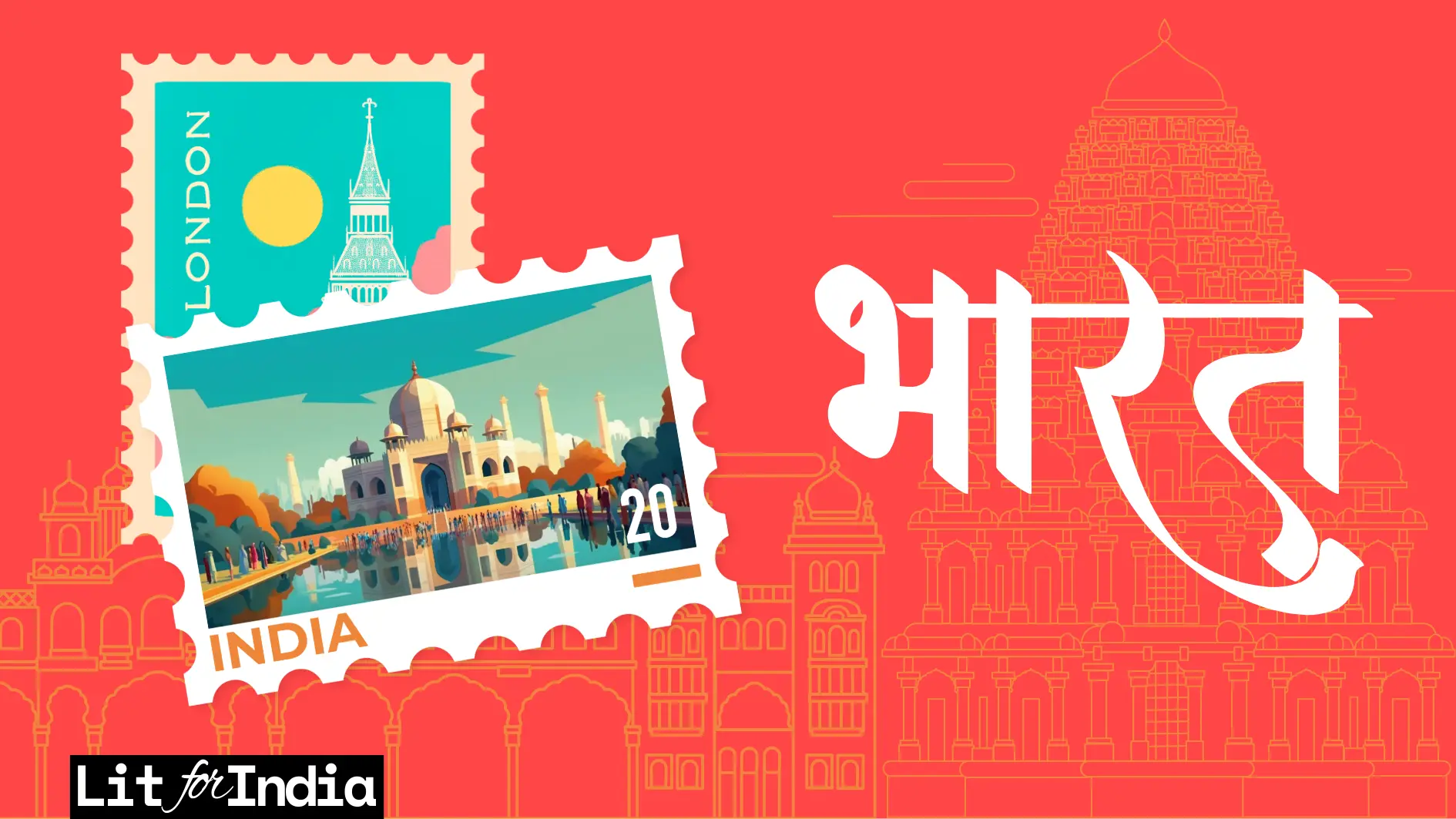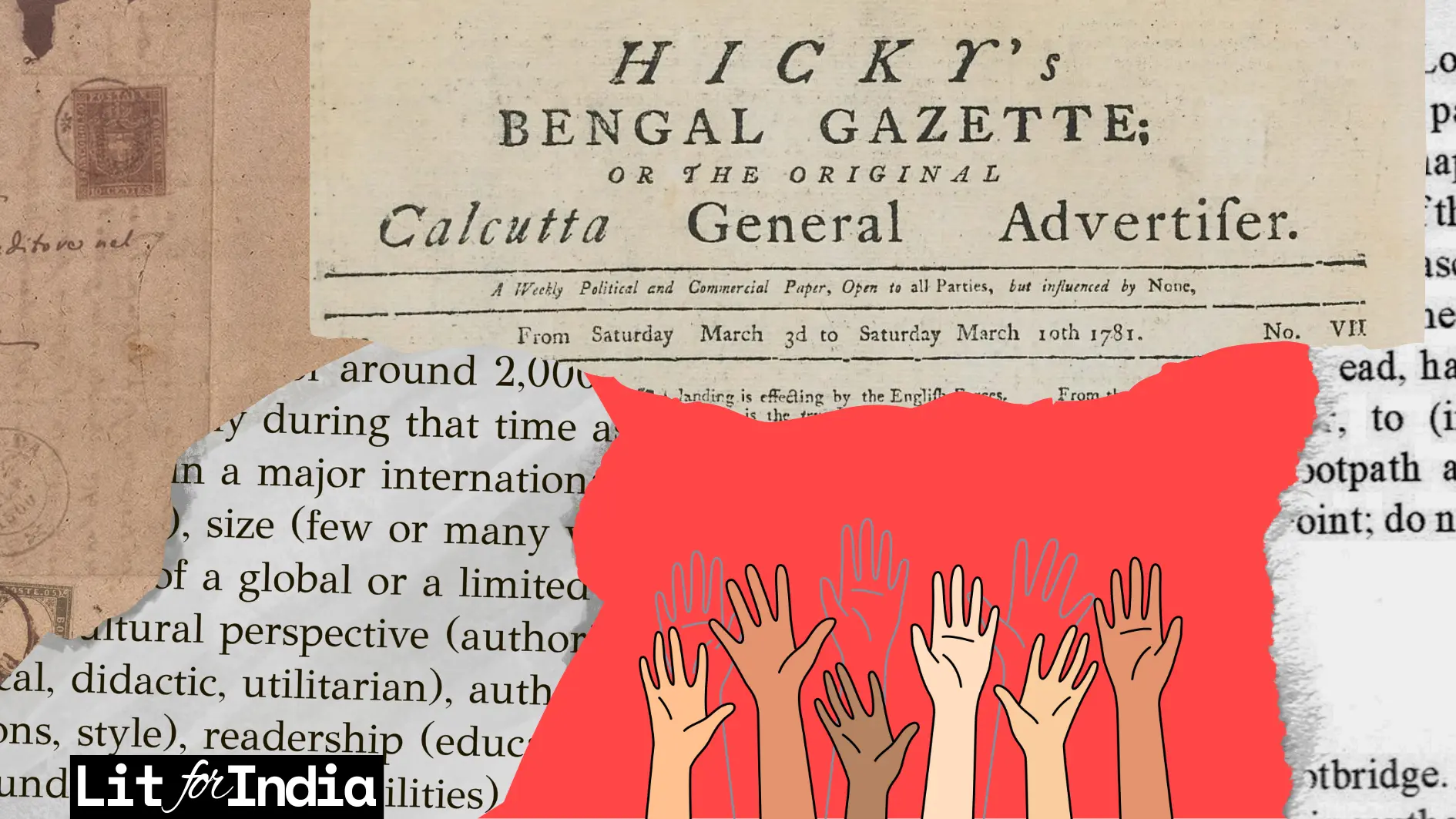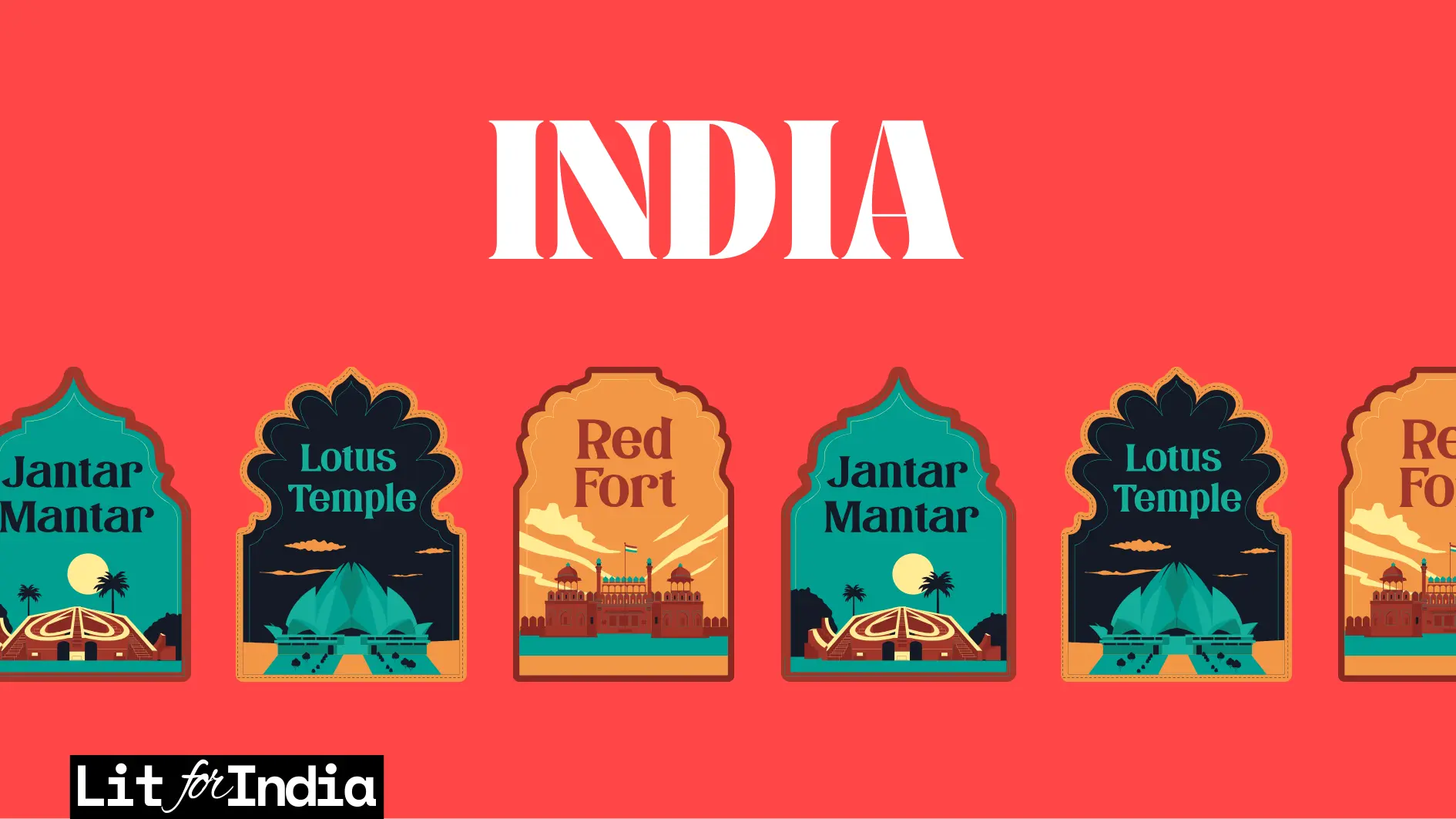Indian English Literature occupies a unique and dynamic position in the global literary landscape. Emerging as a by-product of British colonisation, it reflects the complex interplay of cultural exchange and historical context. When the British introduced English as a medium of education in India, it laid the foundation for a new literary tradition.
Indian writers began to express their experiences and narratives in English, leading to the birth of a rich and diverse body of work. From the early contributions of pioneers like Bankim Chandra Chatterjee and Rabindranath Tagore to the global acclaim achieved by contemporary authors like Salman Rushdie and Arundhati Roy, Indian English literature has evolved significantly, capturing the imagination of readers worldwide and addressing themes of identity, colonialism, and modernity. In this blog, we are going to discuss the origin and development of Indian English Literature in detail.

Table of Contents
Early Beginnings (17th & 18th Centuries)
The arrival of the East India Company and the Initial Influence of English
The arrival of the East India Company in the early 17th century marked the beginning of British influence in India, which subsequently led to the introduction of the English language. Initially, the Company’s primary focus was on trade, but as their control expanded, so did their cultural and administrative influence. English began to permeate various aspects of Indian society, particularly among the educated elite, as it was increasingly used in administration, education, and law.
Emergence of the First English Publications in India
One of the significant early influences of English in India was the emergence of English-language publications. The first newspaper printed in India was the “Hicky’s Bengal Gazette“, published in 1780 by James Augustus Hicky. This weekly newspaper played a crucial role in disseminating information and ideas in English, setting a precedent for future publications.

In addition to newspapers, various government documents and official records were published in English. These publications aimed to facilitate communication between British officials and the local population, further entrenching English in the Indian administrative framework.
The Landmark Publication – Sake Dean Mahomet’s “Travels of Dean Mahomet” (1793)
A significant milestone in the early development of Indian English literature was the publication of “Travels of Dean Mahomet” in 1793. Sake Dean Mahomet, an Indian traveller and entrepreneur, wrote this work, which is considered one of the earliest books written by an Indian in English. The book is a series of letters detailing Mahomet’s experiences and observations during his travels from India to England. It provides valuable insights into the cultural exchange between the East and the West and highlights the complexities faced by Indians in adapting to and adopting English as a medium of expression.
Challenges Faced by Early Indian Writers in Using English
The early Indian writers who chose to write in English faced several challenges. One of the primary difficulties was mastering the intricacies of the English language while maintaining their unique cultural identities. They were often expected to adhere to the standards of “proper” English, which meant avoiding the use of Indianisms or expressions unique to Indian culture.
This emphasis on proper English created a tension for writers who sought to authentically represent their experiences and perspectives. They had to navigate the fine line between adhering to the linguistic norms imposed by the British and infusing their work with their cultural essence. Despite these challenges, many early writers succeeded in creating a distinct voice that contributed to the richness of Indian English literature.
The early beginnings of Indian English literature set the stage for a rich and diverse tradition that would evolve significantly in the centuries to come. The initial influence of the East India Company, the emergence of English publications, and the pioneering work of writers like Sake Dean Mahomet laid the foundation for the development of a unique literary voice that continues to resonate in contemporary literature.
The Rise of Indian Voice (19th & Early 20th Centuries)
Growing Confidence of Indian Writers in Using English
As the 19th century progressed, Indian writers began to gain confidence in their use of English. This period marked a significant shift from merely imitating British literary styles to developing a distinct voice that reflected their unique cultural experiences and perspectives. The growing sense of national identity and the influence of the Indian independence movement fueled this confidence. Writers started to use English not just as a colonial language but as a powerful tool to articulate their narratives, social issues, and aspirations.
Debate About the Legitimacy of Using English as a Literary Tool for Indian Stories
Despite the growing confidence, there was considerable debate about the legitimacy of using English to tell Indian stories. Critics argued that English, being a foreign language, could not fully capture the nuances of Indian culture and experiences. They believed that Indian literature should be written in native languages to preserve authenticity. However, proponents of Indian English literature contended that English provided a global platform for Indian voices and allowed for cross-cultural dialogue. They argued that the adoption of English was a pragmatic choice that enabled Indian writers to reach a broader audience and challenge colonial stereotypes from within the coloniser’s linguistic framework.

Development of Distinct Themes and Styles
During this period, Indian English literature began to explore themes that were distinctly Indian, moving away from the purely imitative works of the earlier era. Writers delved into Indian culture, mythology, and social issues, blending Western literary techniques with Indian storytelling traditions. This fusion resulted in a unique literary style that was both innovative and deeply rooted in Indian ethos.
Exploration of Indian Culture and Mythology
Indian writers started incorporating elements of Indian culture and mythology into their works, creating rich, layered narratives that resonated with Indian readers while also appealing to an international audience. This approach allowed them to present Indian traditions and beliefs in a way that was accessible and engaging to those unfamiliar with them.
Social Issues
Social issues such as caste discrimination, gender inequality, and the struggle for independence became prominent themes in Indian English literature. Writers used their works to critique societal norms and advocate for social reform. This period saw a rise in socially conscious literature that aimed to raise awareness and inspire change.
Prominent Early Writers
Rabindranath Tagore
Rabindranath Tagore (1861-1941) is one of the most celebrated figures in Indian English literature. Although he primarily wrote in Bengali, many of his works were translated into English, gaining international acclaim. Tagore’s novel “Gora” and his collection of poems “Gitanjali”, for which he won the Nobel Prize in Literature in 1913, are notable examples of his contribution to Indian English literature. His works often explored themes of nationalism, spirituality, and humanism, reflecting his deep engagement with both Indian and global issues.
R.K. Narayan
R.K. Narayan (1906-2001) emerged as a significant voice in Indian English literature in the early 20th century. His works are known for their simplicity, humour, and profound insight into Indian life. Narayan’s most famous creation, the fictional town of Malgudi, serves as the setting for many of his novels, including “Swami and Friends”, “The Bachelor of Arts”, and “The Guide”. Through his vivid characters and relatable stories, Narayan captured the essence of ordinary Indian life, making it accessible to readers around the world.
The rise of the Indian voice in English literature during the 19th and early 20th centuries marked a pivotal moment in the development of this genre. By embracing English and infusing it with their cultural heritage, Indian writers created a unique literary tradition that continues to thrive and evolve, offering a rich tapestry of stories that reflect the complexities and beauty of Indian life.
Maturity and Global Recognition (Mid-20th Century – Present)
Indian Independence and the Evolving Role of English in Indian Society
The achievement of Indian independence in 1947 marked a significant turning point in the role of English within Indian society. Post-independence, English continued to serve as a bridge language, uniting the linguistically diverse nation. It became one of the official languages of India, playing a crucial role in administration, education, and communication. As the country modernised and globalised, the importance of English grew, facilitating international trade, diplomacy, and cultural exchange.
The Concept of “Indian English”
With the evolving role of English, the concept of “Indian English” emerged, reflecting a unique linguistic and cultural synthesis. Indian English incorporates Indian words, idioms, and sensibilities into the English language, creating a distinct variant that resonates with Indian speakers. This form of English often includes elements of Hindi, Tamil, Bengali, and other regional languages, along with cultural references unique to India. Indian writers began to embrace this hybrid language, using it to authentically convey their experiences and narratives.

Rise of Prominent Contemporary Indian English Writers
Salman Rushdie
Salman Rushdie is a towering figure in contemporary Indian English literature. His groundbreaking novel “Midnight’s Children” (1981) won the Booker Prize and the Booker of Bookers, solidifying his reputation on the global stage. Rushdie’s works are known for their magical realism, intricate narratives, and exploration of complex themes such as identity, migration, and politics. His writing style has influenced a generation of writers and opened new avenues for Indian English literature.
Arundhati Roy
Arundhati Roy burst onto the literary scene with her debut novel “The God of Small Things” (1997), which won the Man Booker Prize. Roy’s novel is celebrated for its lyrical prose and deep exploration of social issues, such as caste and family dynamics, within the context of Indian society. Her success brought international attention to Indian English literature and demonstrated the global appeal of stories rooted in Indian culture.
Vikram Seth
Vikram Seth is another prominent contemporary Indian English writer, known for his versatility and mastery of language. His novel “A Suitable Boy” (1993) is one of the longest single-volume novels ever published in English, and it provides a rich tapestry of Indian society in the post-independence era. Seth’s ability to weave intricate plots and develop complex characters has earned him critical acclaim and a devoted readership worldwide.
Recognition on the Global Stage
Indian English literature has achieved significant recognition on the global stage. Indian writers have won prestigious international awards, their works have been translated into multiple languages, and they have garnered a wide readership across the world. The global success of Indian English literature is a testament to its richness and diversity, as well as the universal appeal of its themes and narratives.
International awards, such as the Man Booker Prize, have been instrumental in bringing Indian English literature to the forefront. Writers like Salman Rushdie, Arundhati Roy, and Kiran Desai have received global accolades, highlighting the quality and impact of their works. Additionally, the translation of Indian English literature into various languages has further expanded its reach and influence, allowing readers from different cultural backgrounds to engage with Indian stories.
The maturity and global recognition of Indian English literature reflect its evolution from a colonial by-product to a vibrant and influential literary tradition. By incorporating Indian sensibilities into English and addressing universal themes, contemporary Indian writers have created a body of work that resonates globally, enriching the world’s literary heritage.
Future Prospects
Indian English literature continues to evolve, adapting to the changing socio-political landscape and addressing contemporary issues such as globalization, migration, and identity. The diversity of voices and the richness of themes ensure that Indian English literature remains dynamic and relevant.

Looking to the future, Indian English literature is poised to further expand its influence, with new writers emerging and contributing to the global literary conversation. The increasing recognition of Indian English works in international literary circles and the growing interest in translations indicate a promising future. As Indian writers continue to innovate and explore new narratives, Indian English literature will undoubtedly continue to thrive and inspire readers worldwide.
Conclusion
The journey from the Origin and the Development of Indian English literature has come a long way from its colonial beginnings. From hesitant first steps to a confident roar, it has become a powerful voice for Indian experiences and the people. It has challenged, critiqued, and celebrated Indian culture, offering a window into the soul of a nation. As India continues to develop in the 21st century, English literature has become widely known and created an original status among the global frontier, pushing boundaries and exploring new themes. It created a new path for the upcoming writers of Indian English literature.

